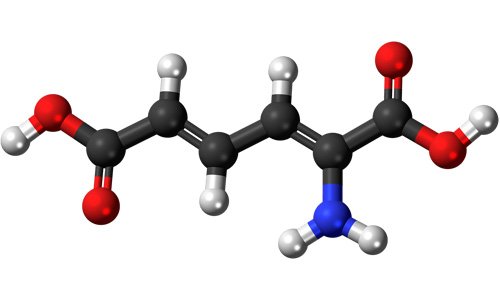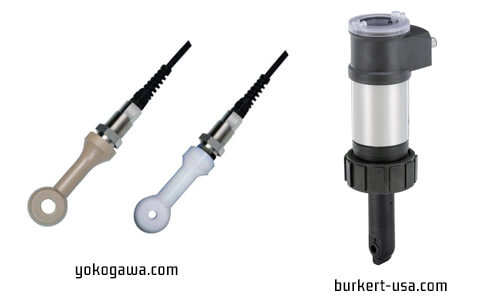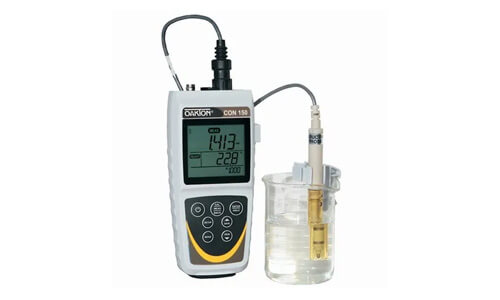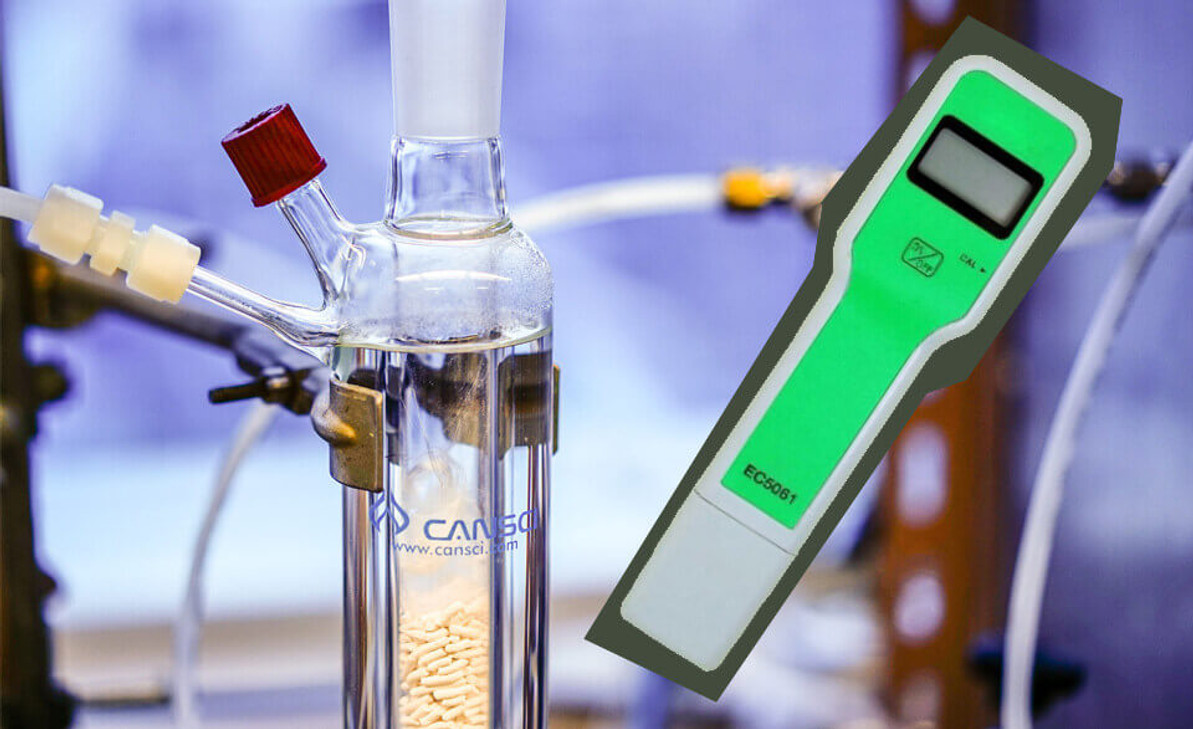Conductivity Meter (Working Principle, Types, Use)
Conductivity is one of the main parameters to measure the PH and ionic content of a solution while controlling the level of nutrients, salts or impurities present within a sample and determining its health. Conductivity measurements have various applications in chemistry, biology, and environmental science.
Browse our wide selection of Conductivity Meter products category with the highest quality.
Conductivity measurements of solutions can give significant insights into the nature of, and the particles in, a solution.
Conductivity is the ability of a material to pass or carry electricity or an electric current. It means the existence of charged particles or ions from electrolytes dissolved in it that enable the solution to be conductive.
If the test solution contains an acceptable concentration of ions, then the conductance of the solution is great.
Types of ions, the concentration of ions, and the solution’s temperature are the factors that affect conductivity.
The conductivity meter measures conductivity. In this article, we will discuss what a conductivity meter is and how such meters work.
The device determines the health status of the natural water body. It is beneficial for inspecting the properties of solutions, such as total dissolved solids (TDS) for water quality investigation.
The meter also checks the correct temperature of the solution and expresses the results on the monitor. The degree of ability to pass electric currents can vary. Substances with conductive solutions are known as electrolytes.

How Is Conductivity Measured?
A conductivity meter has a probe that measures conductivity. A conductivity meter measures conductivity by applying an alternating electrical current (I) to two or four electrodes. It determines the electrical resistance of the solution. To do this, the current method or potentiometric method is used.
After immersing electrodes in a solution the meter applies a voltage between two electrodes. Electrical resistance from the solution creates a drop in voltage, which is read by the meter.
When the electrical current is applied to the solution, the cations or ions with a + charge transmit to the negative electrode, and the anions or ions with a - charge transmit to the positive electrode. This transition of the ions leads to the solution being conductive.
What Is The Conductivity Meter Basic Principle?
There are two technical approaches or principles to measure conductivity - inductive and contracting.
Inductive Conductivity
Inductive conductivity meters or electrodeless conductivity meters use two electromagnetic coils inside a corrosion-resistant casing to measure the conductivity of a solution.

When the device submerges into the solution, it applies an alternating voltage to the drive coil, which causes a voltage in the receiving coil. The voltage makes an ionic current move proportional to the conductance of the solution.
Contacting Conductivity
Contacting meters have conducting electrodes made of metal that are in direct contact with the solution.
The meter applies an alternating voltage to the electrodes, and the electric field created in the solution causes the ions to move back and forth.
This creates a current between the two conductivity meter electrodes.

Another conductivity meter principle that must be taken into account when using a conductivity meter is the temperature of the solution.
Conductivity is highly dependent on the temperature, therefore you must choose a temperature-compensated device. you should calibrate the device to be the same temperature as the solution under testing.
Conductivity Meter Units
Conductivity is usually expressed in micro- or millisiemens per centimeter (uS/cm or mS/cm).
It can also be measured in micromhos or millimhos/centimeter (umhos/cm or mmhos/cm), but these units are less common. One siemen is equal to one mho.
What Is The Difference Between PH Meter And Conductivity Meter
The main difference between pH meter and conductivity meter is that the pH meter measures the activity of hydrogen ions in solutions, but the conductivity meter measures voltage by comparison of an unknown voltage with a determined voltage.
| pH Meter | Conductive Meter |
| A type of potentiometer used to measure the hydrogen ion activity in a solution | A potentiometer device is used to measure voltages |
| Measuring the voltage between two electrodes and displays the result as a pH value | Measuring the voltage by comparing a determined voltage with an unknown voltage |
|
Unitless |
Units of voltage measurement |
Click the following link if you are curious about ph meter working principle.
Factors Affecting Conductivity
The precision of conductivity measurements can be affected by different factors such as
- The temperature of the solution
- Geometry
- The concentration of the solution
- Polarisation
- Cable resistance and capacitance
- Cell constant
- Contamination
- Movement of ions in the solution
- Frequency change
- The temperature of the solution
Why Is Conductivity Important In Water?
Conductivity is good evidence of the purity of the liquid. So, it is generally used in pure water measurements to determine the existence of contaminants. Water, generally, is a conductive substance. All waters are not equally conducive.
For example, salty sea water provides a much higher conductivity than purified, clean water. If the amount of chemicals and minerals in the water is high, it results in higher conductivity.
Therefore, this is the biggest reason to utilize a conductivity meter to measure the conductivity of water.
Conductivity Meter Use
- Boiler maintenance
- Agriculture
- Aquariums, aquaponics, and aquaculture
- Chemistry
- Biology
- Environmental science
- Hydroponics
- Freshwater systems to control the quantities of nutrients, salts or impurities in the water
- Chromatography
- Food production
- Performing conductometric titrations
- Used in the desalination plant, boiler feed water, Cooling tower Water
- Leak Detection, single point or differential
- Evaluate the quality of water
- Hardness measurement in laundries
- Selective Chemical Measurement In mixed solutions
- Condensate and steam quality protection
- Concentration Measurement and dilution control
- Wastewater treatment RO treatment
- water Salinity Testing
- Pharmaceutical manufacturing processes
- Reverse osmosis
- Pools and spa
- Paper industries
- Condensate and Steam quality protection
- TDS Testing
- Water conditioning
- Fish farming
- Quality control
- Cooling tower
Advantages
- Intuitive interface and operation
- Automatic temperature compensation for maximized accuracy
- Simplified calibration protocols for easy maintenance
- Compact and durable design
- Easy calibration system
- Withstand rough environmental conditions and terrains
- Purpose-built for field use
- Reliably measure conductivity
- Easy-to-use
- Fast and easy operation
- Accurate measurement , premium performance, and ultimate flexibility
Question
Can a PH Meter Measure Conductivity?
Yes, a pH meter has the ability to measure conductivity and many other parameters like salinity, TDS, temperature, etc.
Is The Conductivity Meter Measuring Conductivity Or Conductance?
Conductivity is the ability to measure the electrolytes in a solution. It is expressed as the conductance in a given amount of sample. Conductance is the capability of the solution to conduct electric current.
How Does Temperature Affect Conductivity Readings?
The effect of temperature on conductivity readings is based on the solution under measurement. It has the greatest effect on solutions with low conductivity. There is a general rule that is a 2% change (increase)/degree C. This rule is true for most solutions.
Can Conductivity Be Measured In Aqueous Solutions Only?
No, all substances have some conductive features. Generally, organic compounds like benzene, alcohol, and petroleum products contain very low conductivities. metals provide very high conductivities. Determining the conductivity of highly flammable solutions is very risky.
If you want to read more here are the titles of articles which are useful for you:
Temperature Controller And Process Controller
Tachometer (Working Principle, Types, Applications)
Recent Posts
-
Booster Pump Troubleshooting and Maintenance: How to Fix and Prevent Common Issues
1. Introduction Imagine turning on your faucet only to be greeted with a weak trickle of water when …22nd Apr 2025 -
Energy-Efficient Booster Pumps: Selection and Tips for Maximizing Performance
1. Introduction Imagine never having to deal with fluctuating water pressure, noisy pumps, or skyroc …19th Apr 2025 -
Booster Pumps for Sustainable Water Systems: Irrigation and Rainwater Harvesting Solutions
1. Introduction Water scarcity is no longer a distant threat—it’s a reality affecti …16th Apr 2025




